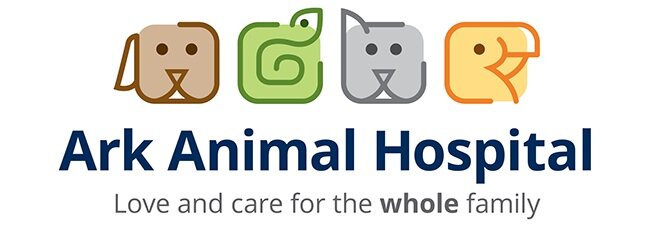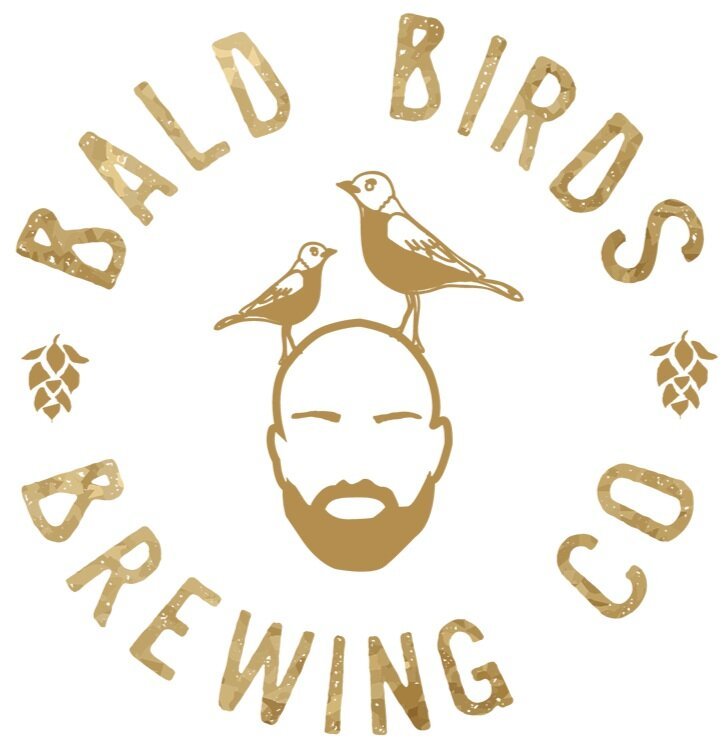Frequently Asked Wildlife Questions and Topics of Inquiry
-
Our Goal
PMWC's mission is to provide healing and temporary refuge to injured and orphaned wild animals, with the single goal of release back into their native environment, and to educate and encourage people to care about and coexist with wildlife.
Our Identity
Philadelphia Metro Wildlife Center (PMWC) is a non-profit, wildlife rehabilitation organization serving Philadelphia, Montgomery, Chester and Delaware counties.
Impact
33 combined years of fully licensed wildlife rehabilitation experience
65 trained, dedicated volunteers
80,000+ animals treated
150,000+ phone calls answered
3,000+ patients treated in 2020
What happens after I drop off the animal?
The wild animal you found will receive a medical exam by licensed professional staff to determine its needs. Prompt, humane care is our highest priority. After that, the animal will receive ongoing medical care, feeding, raising, enrichment and rehabilitation until it is ready to survive on its own. We will then release the animal back to the wild.
-
Yes, for several important reasons (267) 416-9453:
Sometimes nonintervention is the best way to help the animal. To illustrate, baby animals may appear to require assistance when their activities are part of normal development. It is easy to mistake an awkward baby bird attempting first flight from a bird with an injury that requires repair. We are experts at distinguishing between the two scenarios.
Sometimes assistance is better provided in-place, and a trip to the clinic is unnecessary.
The situation may involve some safety issues which would require special handling or containment guidance.
Lastly, we are a field hospital with many patients in various conditions. It is crucial to know that a patient is en-route so we can allocate our limited resources accordingly and prepare effectively.
-
Philadelphia Metro Wildlife Center is a non-profit wildlife hospital. There is no fee.
However, we would not exist without donations from our supporters.
All of our work is funded by donations. We receive no government subsidies or money. If you donate, it would help us treat the animal you found and keep our lights on. We would truly appreciate it.
-
If we are unable to speak to you, it means we are either on the phone or in the midst of treating our patients. You can visit our Help With An Animal section for assistance or review our FAQ. Please call back. We will answer as soon as we are able.
-
No.
Several transport services were established to serve as wildlife ambulances. This system does not work. Individuals must speak to an expert in order to know how best to navigate the emergency. Many calls we receive result in our professional advice to NOT INTERFERE. It is easy to do more harm that good - even with the best of intentions.
People unwittingly call the transport service first which introduces issues because they lack the knowledge to remotely assess the situation. These organizations’ only function is transportation. They have a vested interest in transportation and sometimes remove an animal when it should be left in peace.
We have accrued over 30 years of emergency wildlife treatment expertise. That amounts to 80,000+ animals treated (3,000+ this year, alone). This experience was afforded by the division of labor between the public and licensed wildlife rehabilitators. We are a non-profit with few resources. We spend all our time and money on wildlife patients. This set up has worked well for many years.
PLEASE call us first! (267) 416-9453
-
No.
Wild animals deserve the highest level of care that only professionals can provide. As with caring for any life, especially an injured one, accuracy, expertise and precision are crucial to provide effective treatments, diets, environments and procedures. Using wildlife as a fun DIY project is unethical and probably illegal by state or federal law.
-
Please call us for expert advice before taking any action (267) 416-9453. We oppose the removal of healthy wild animals from their environment and counsel co-existence - it is their home too. If necessary, we can provide humane, practical, do-it-yourself solutions to deter animals from your garden, shed, trash or attic if they are causing problems.
Please do not trap and relocate an animal. It is usually illegal. But more than that, dropping an animal in a “nice park” usually means a slow, agonizing death. It will likely confront other animals defending their territories and ultimately starve when removed from its specific food supply. Additionally, you could separate a mother from her babies who will die without her nurturing care.
-
1) HUMAN SAFETY COMES FIRST. It is never advisable to put yourself in danger or do something with which you are not comfortable.
2) CALL US FOR INSTRUCTIONS. Every situation is a little different. And, not every animal who seems to be hurt, actually is. We will be more than happy to talk you through any situation with a wild animal. Sometimes, after speaking to us on the phone, we will request a photo to give us more information. If it is after hours, we provide a tool on our website to help you know what to do in a wildlife emergency situation. Below are the basic rules for capturing a wild animal in need of help
Unless instructed by us, do NOT feed the animal, force it to drink water, or put water in the box. Most patients need be incubated and medically re-hydrated before feeding.
If you are able, place the animal in a closed box, and resist the urge to 'peek'. Dark and quiet conditions help animals to stay calm. Stress from a potential predator (you), can cause the animal's 'flight or fight" system to work overtime, causing serious illness or death.
BOX OVER METHOD
If the animal is possibly dangerous, like a hawk, owl, fox, raccoon, fox etc., the best method is usually the “box over" method. Wear gloves, and never touch a bat, skunk, raccoon, woodchuck (groundhog) or coyote with bare hands - rabies is a real concern. Any animal is a candidate for the box over method. Even a squirrel who is seriously injured can inflict a dangerous bite. So when in doubt, use this method for ANY animal, even a small bird. Here are the instructions:
1) Find a suitable sized box or container. Poke a few air holes in it.
2.) Wearing gloves, approach calmly and place the box over the animal.
3.) Slide a piece of board, cardboard, or any other stiff material under the box (like you are catching a spider in a glass with a playing card.)
4.) Duct tape the whole thing up
5.) Bring to a rehabilitator right away. Keep quiet and calm. Don't play the radio in the car.
This article does not account for all the possible scenarios you might face with an injured animal. Great blue herons, for example, absolutely require eye protection before approaching. Their spear-like beaks are made for plucking shiny objects, like eyeballs (and fish). Snapping turtles can reach almost all the way to the back of their shell and relieve you of a finger. Some hurt animals can only be caught with a live humane trap. So it is always best to call us if unsure.
-
Baby raccoons, skunks, foxes and groundhogs are rabies vector species. If you find one alone, you should not touch it. Call us (267) 416-9453. We can usually help these animals, but transportation instructions are involved and complex. We’ll be happy to talk you through it.
-
Opossum mothers will usually not return for a dropped baby possum. So, if you find a baby possum on its own, and he is smaller than 9 inches (nose to butt, excluding tail) he needs to be brought to a wildlife rehabilitator. A baby opossum longer than 9 inches has left his mother and is independent.
If you find a dead adult opossum, you can check to see if there is a pouch. There may be babies within. The pouch is located in the abdomen area. If you see babies, DO NOT remove them from the pouch or take the nipples out of their mouths. Instead, place the whole carcass into a box, and bring it to us - we will remove the babies from the dead mother.
-
Baby squirrels are frequently brought to us after their nest has been disturbed due to weather, tree maintenance, or because they have fallen or have been pushed out of the nest.
Only intervene in the presence of an observable injury:
OBVIOUS INJURY
1) If you see blood, flies, or the squirrel was attacked by a pet, bring it in.
-or-
NO EVIDENT INJURY
1) Place the baby(s) on the bare earth next to the nearest tree.
2) Wait OUT OF SIGHT for an hour or two, then return to see if the mother retrieved the babies.
3) If the mom doesn’t return, call Philadelphia Metro Wildlife Center.
-DO NOT GIVE THE BABY SQUIRREL FOOD OR WATER. We must restore the squirrels to a stable temperature and level of hydration before they can eat. Improper feeding can cause irreversible damage.
-
If you find a young baby gosling or duckling, the first thing to do is check if he is injured. If you see anything abnormal, call us (267) 416-9453. But if the baby duck or goose looks perfectly healthy, the best thing to do is place him in a safe container, like a cardboard box (with paper towel or rag on the bottom so he doesn’t slip around).
Look around for his family. All of his siblings will be the same size - that’s the best clue you have found the right family. Place the baby on the ground close to the family, and watch carefully. If he runs to the parents, and the parents to him, all should be well. Continue to watch to ensure the reunion is successful. If the parents peck the baby or try to avoid him, scoop him back up, and call us or bring him in right away.
-
-IMPORTANT-
This is the time baby birds are at highest risk of "KIDNAPPING" by humans who assume the bird is orphaned. If the bird is not obviously injured, leave it alone. It is crucial to keep kids and pets away to allow the baby bird to develop naturally.
STOP AND OBSERVE
NESTLINGS: A nestling is a naked (or very few-feathered) baby bird, that is fuzzy, and cannot stand or hop.
Nestlings are comparable to human newborns and should be in the nest with their parents. If you find a nestling out of the nest, uninjured, gently return it to the nest when possible. You can always call us for guidance (267) 416-9453. Parents will NOT reject babies due to human contact! If you cannot find the nest, bring the nestling to us immediately.
FLEDGLINGS: Fledglings have all their feathers, but still appear fuzzy and "babyish". They stand, hop, and jump from the nest prior to independent flight. They learn to fly from the ground up, not from the nest down.
Even if unseen, the parents return every few minutes to feed the fledgling. So, don’t interfere with fledglings.
If a fledgling is in a dangerous place - for instance, where he might get stepped on, he can be gently picked up and placed under a nearby bush. Only move it a short distance because his parents will return shortly for the next feeding and must be able to locate it.
IMPORTANT: Never feed a baby bird. Birds have a hole in their tongue that goes right to their lungs. The wrong type of food can quickly kill a baby bird.
-
Unless there is a clearly visible injury, if you find a nest of bunnies, leave them alone. Mom WILL be back.
After she gives birth, the mother covers the babies in dried grass and lots of her own grey brown fur. The “nest” looks like a simple, shallow depression on the ground. She quietly returns at dawn and dusk to nurse. She leaves them alone most of the time because, like mother deer, the mother rabbit’s size and odor attract predators.
After 3-5 weeks, the baby rabbits leave the nest and start to explore. When they are about the size of an adult fist, or 2/3 the length of a dollar bill, they are old enough to be independent of their mother.
DO NOT FEED BABY BUNNIES. They require a highly specialized diet, giving them anything else will harm them. Feeding bunnies is complex; food can easily enter their lungs, killing them.Item description
-
In May and June, fawns are born. At that time, people often encounter baby fawns all on their own, seemingly abandoned (in their flower bed, under a tree, or on a hiking trail). This is normal. The mother deer did not abandon her offspring. Mother deer often have twins and separate them. She will "park" each baby in a spot she chooses and encourage it to stay there. Then, she'll leave for most of the day. The theory is that the babies are safer alone. A mother’s size and odor might attract predators.
The baby is conditioned to stay very still, with its white spots providing camouflage. So, if you see a baby deer alone - even a brand new, tiny newborn - let it be. Keep children and pets away. Mom will return to feed the baby at regular intervals. She may move him tomorrow, or she may keep him there.
However, if a baby deer is crying inconsolably, has feces around its rectum, or flies around it, it needs help. Call us (267) 416-9453.
-
It is unsafe to transport adult deer. If you find injured deer, please call the Pennsylvania Game Commission at (610) 926-3136.
-
Any animal caught by a cat requires emergency care. Gently place the bird in the towel-lined box, close the lid, and bring him in ASAP.
Even if the bird is gravely injured, bring him in so we can administer palliative care.
If the cat is yours, please consider keeping him indoors, building a “catio" or letting him outside only under close supervision.
-
Decide whether the bird needs emergency care or can recover independently:
1) EMERGENCY - If a bird hits a window, examine it for blood or obvious broken bones (wing/leg bone protrusion or bent incorrectly). If injured, the bird needs help; please bring it to us. If the bird is a raptor (hawk, owl, etc) please call us or consult our "box over" method instructions (https://www.phillywildlife.org/whats-new/2019/1/8/how-to-bring-an-animal).
2) HOME CARE and OBSERVATION - If, however, the bird is lying or standing still without obvious trauma, he may be stunned and recover independently. Insert the bird into a cardboard box with a towel at the bottom and close the lid. Leave the box in a quiet place for one hour, then bring it outside and open it. If the bird flies away, great! If not, he needs further help and can be brought to us.
If birds frequently hit your windows, there are effective, affordable, attractive preventions. Search for “bird strike window stickers” or call us for advice (267)-416-9453.
-
ANY ANIMAL STUCK ON A STICKY TRAP IS AN EMERGENCY.
Preparation for transfer:
1) Do NOT try to remove the animal.
2) DO minimize further injury by “disabling” the rest of the trap. Use paper towel or similar to cover the remaining exposed sticky parts.
Do NOT use oil on the animal or trap. It can destroy feathers or fur rendering the animal hypothermic.
3) DO put the animal and trap into a cardboard box and close the lid.
4) Bring the bird ASAP.
If it is a bat, use leather gloves.
-
If a bird consistently attacks your window, it’s almost certain he mistakes his reflection and an "intruder".
Cover the part of the window being attacked. Cover the OUTSIDE of the window. If you put the paper on the inside, the reflection will remain.
Call us for more permanent solutions (267) 416-9453.
-
Never trap and relocate an animal. It’s often illegal. In unfamiliar territory, the animal may be attacked if it "invaded" another's turf, it could starve to death without a known food source, and you could unwittingly separate a mother from her dependent babies.
Encourage the animal(s) to pack up willingly to a place of her choosing.
Ideas for a DIY eviction:
The attic is hospitable because it's dark, quiet, and smells acceptable. Change it up to encourage voluntary eviction. First, use a bright light. A strobe light is even better. Here is one called "The evictor" that has great reviews. Second, use a radio to play something loud and obnoxious. Finally, use ammonia or vinegar soaked rags, placed in coffee cans with drilled holes, around the area to make the smell noxious. Once you’ve confirmed all inhabitants are gone, PATCH UP THE ENTRANCE. Hardware cloth is a good choice, since animals cannot chew through it. Please call us for further advice.










